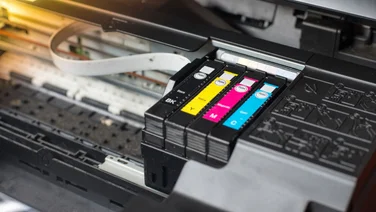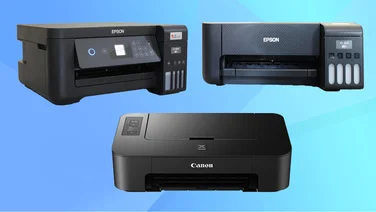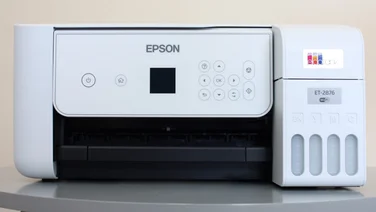To help us provide you with free impartial advice, we may earn a commission if you buy through links on our site. Learn more











There are three compact system cameras (CSCs) in the current Olympus range. They all share the same sensor and image processor, but differ in terms of features, size and weight. The first two are successors to previous models, in name at least, with the heavyweight, enthusiast Pen E-P3 and the more competitively-priced yet still feature-packed Pen E-PL3. The third model is the Olympus Pen E-PM1, which we’re looking at here. It’s the first in a new line, with the ‘M’ standing for mini, but given its technical similarities to the other models, E-PM3 may have been a more suitable name.

The mini part is certainly right though, measuring just 110x64x86mm with its collapsible 14-42mm kit lens attached. That makes the E-PM1 around the same size as both the Panasonic Lumix DMC-GF3 and our current favourite the Sony NEX-5N. With all these cameras, your choice of lens and accessories will make far more difference to portability than any small variations in body size.
Speaking of lenses, the EPM-1 has access to probably the best selection of any CSC, thanks to its Micro Four Thirds mount. Olympus’s own range of lenses is impressive and this is further bolstered by those released from Panasonic – though with the latter you are paying for lens-based stabilisation that the Olympus body can’t make use of, as it uses a sensor-based system instead. In addition Olympus has released a formidable range of accessories, such as electronic viewfinders, external microphones and even a Bluetooth adaptor for sharing photos. A mini clip-on flash is bundled with the E-PM1, but the accessory shoe can also take full-sized flash guns if required.

This degree of flexibility is impressive on a camera so small, but is most likely to appeal to enthusiasts, rather than those who just want superior pictures from their camera’s automatic mode. It’s at the latter group which the E-PM1 is clearly aimed, though, with its clean lines and minimal physical controls. The obvious omission is a mode dial, so you have to press the Menu button and navigate the menu to switch exposure modes. Apart from Playback, the only remaining buttons are Info and Record. In its default mode, even the dial around the four-way control is disabled.
Given the lack of a mode dial, the menu system provides instant access to the various exposure modes, there’s no touchscreen either, as on the NEX-5N. The settings menu is bewilderingly bare at first glance, however, we eventually found a rather obscure setting that gives you access to the full menu. From here you can assign a wide range of controls to various buttons, or to the dial, making the E-PM1 a usable camera for any shooting style, as long as you don’t change modes for every shot.

The screen itself follows the current trend for widescreen designs, so video fits but photos only take up the centre of the screen – although the black bars down either side make it easy to read the icons that would otherwise sit over the image. Unlike its E-PL3 sibling, this screen doesn’t tilt, making it guesswork to compose shots while holding the camera above your head. It’s not the best screen either, not as sharp as that on the NEX-5N and a little smeary when it comes to fast motion.

Previous Pens were plagued by poor performance and sluggish autofocus – which struggled in low light – but this has now all changed. The new image processor is a massive improvement, with the camera going from off to taking a photo in just 0.9 seconds, with subsequent shots following at 0.6 second intervals. The autofocus is now startling quick, especially with the new kit lens, routinely outpacing the NEX-5N. It’s far better in low-light too, with an AF-assist lamp giving sharp shots in conditions that would have defeated older Pens.

Speaking of low-light, there was impressively little noise from the sensor at higher ISO settings. Our tests showed that the sensor was superior in this respect to the GF3 and the Nikon 1 J1, though it couldn’t stand up against the superb NEX-5N. Image stabilisation was also a little disappointing, with less than half as many steady shots at full zoom compared to the NEX-5N.
All that said, the results are impressive overall. Photos were filled with detail, focus was sharp and automatic exposures were well chosen. There’s little noise reduction, so you get plenty of detail in your shots too. The results may be a little vivid for some, with boosted contrast and digital sharpening, but you can always play around in the menu if this isn’t to your taste.
Full HD video recording, for which there’s a dedicated button unless you reassign to some other function, is done at 30fps in AVCHD format. There are plenty of control options here, with the ability to shoot in priority exposure modes (shutter or aperture) or full manual. The ISO is constrained when shooting video to 400-1600, and at ISO 1600 the results, again, weren’t as sharp as those from the NEX-5N. The kits lens also made light purring noises that were picked up by the built-in microphone.
The E-PM1 certainly isn’t as exciting as some of its competition, but it’s fairly strong in the key areas – such as performance, focus and noise levels. It may be mini by design, but best of all of is its mini price. At present it’s available for just over £350, with its kit zoom, if you shop around; plus there’s another £50 off until January thanks to a cashback offer from Olympus. That’s around £180 less than the NEX-5N at £530, which is also available with £50 cashback at present and around £100 less than the technically identical E-PL3 – though the extra money will be justified by those who feel a mode dial and tilting screen are essential features.
The E-PM1 is the cheapest CSC camera available at present by a significant margin and this, combined with a lack of any major failings, brings it right back into contention for your cash. If your budget is tight now, but you later plan on investing in extra lenses or accessories, then the E-PM1 is a good choice, and a deserving winner of our Budget Buy award.






